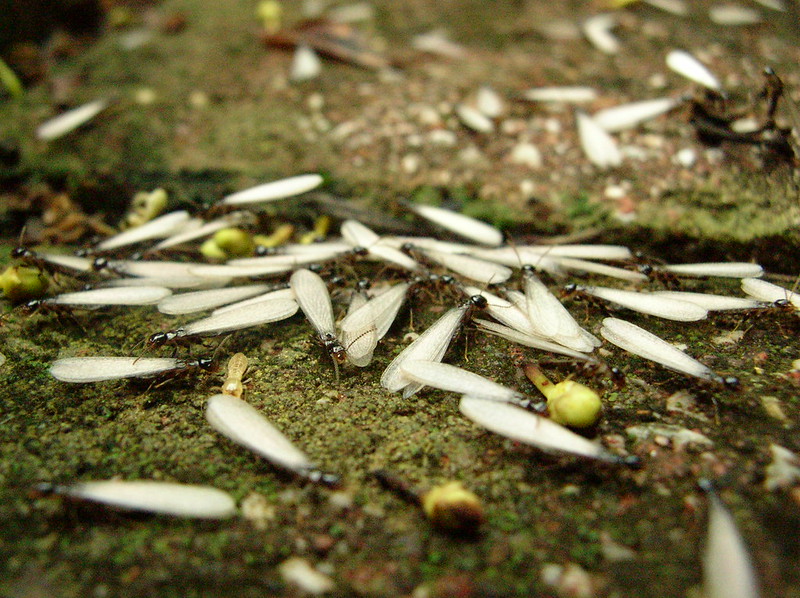Extension entomologist, agents to participate in invasive termite study
March 31, 2025
By Ryan McGeeney
U of A System Division of Agriculture
Fast Facts:
- Coptotermes formosanus accidentally introduced to Louisiana, elsewhere from Taiwan
- A warm-climate species, the termites have been slowly moving north
- Researchers hope to capture specimens during reproductive events
(576 words)
(Newsrooms: with file art)
FAYETTEVILLE, Ark. — An invasive — and particularly ravenous — termite species has been making its way north for years. Jon Zawislak, extension entomologist for the University of Arkansas System Division of Agriculture, and Cooperative Extension Service agents throughout areas of Arkansas are working to detect its presence in Arkansas.
Zawislak is the Arkansas state coordinator for the North American Termite Survey, headquartered at the University of Georgia College of Agricultural and Environmental Sciences in Athens, Georgia. According to its website, the survey is supported by researchers across 12 states, dedicated to supporting pest management professionals and tracking the spread of the invasive Formosan subterranean termite, Coptotermes formosanus.
“It’s native to China,” Zawislak said. “It was introduced to Taiwan, which used to be called Formosa, hence the name.
“It was accidentally introduced to New Orleans in the mid-20th Century, and it is voracious. It’s probably the most destructive termite pest we have, and because it’s invasive, it has escaped the natural enemies, pathogens, etc., in its native territory. That helps it to outcompete native termite species here.”
Zawislak said the invasive termites, a single colony of which can consume as much as 12 ounces of wood per day, have been steadily expanding their range northward into the United States for years. While they have primarily been confirmed in the southeastern states from Texas to Florida, the species has also been found in California and Hawaii. And while they are a warm-climate species, Zawislak said, they do not appear to have yet hit their northern barrier, where it will be too cold to reproduce and survive.
The survey will expand into Arkansas for the first time in 2025. Zawislak said researchers will primarily focus on counties within the Arkansas Delta as well as the tier of counties bordering Louisiana.
“If we discover the invasives in those counties, we’ll expand the survey further into the state,” he said. “We want to find out if they are here because treatment methods are a little different than for the native species.”
Cooperative Extension Service agents in counties along the southern and eastern borders of the state will conduct the survey by placing glue traps near streetlamps or other light sources.
To reproduce, Zawislak said, termite colonies send out thousands of “swarmers,” or winged termites, which are both male and female. They mingle with swarmers from other colonies, which helps diversify the gene pool. It’s these swarmers that are caught in researchers’ traps.
“They find each other, pair up, and a new king and queen termite will land somewhere,” Zawislak said. “They drop their deciduous wings and burrow underground or into an old tree stump or something and raise a little family. It may take several years for them to become sizable enough to cause any real damage, but once a colony is established, they send workers out to forage for food.”
While the termite may not be everyone’s favorite insect, Zawislak said Arkansans don’t need to overreact to the arrival of a new species.
"Termites can produce millions of reproductive swarmers each year, but thankfully, fewer than 1 percent of these will successfully start a new colony,” he said. “Many become food for other species, or simply don't make it.
“I don’t want to scare people into thinking there’s some kind of monstrous invasion of house-eating insects on their way,” he said. “We’re just trying to understand more about them because they’re some of the most destructive insects in the southern United States.”
To learn about extension programs in Arkansas, contact your local Cooperative Extension Service agent or visit www.uaex.uada.edu. Follow us on X and Instagram at @AR_Extension. To learn more about Division of Agriculture research, visit the Arkansas Agricultural Experiment Station website: https://aaes.uada.edu/. Follow on X at @ArkAgResearch. To learn more about the Division of Agriculture, visit https://uada.edu/. Follow us on X at @AgInArk.
About the Division of Agriculture
The University of Arkansas System Division of Agriculture’s mission is to strengthen agriculture, communities, and families by connecting trusted research to the adoption of best practices. Through the Agricultural Experiment Station and the Cooperative Extension Service, the Division of Agriculture conducts research and extension work within the nation’s historic land grant education system.
The Division of Agriculture is one of 20 entities within the University of Arkansas System. It has offices in all 75 counties in Arkansas and faculty on three campuses.
Pursuant to 7 CFR § 15.3, the University of Arkansas System Division of Agriculture offers all its Extension and Research programs and services (including employment) without regard to race, color, sex, national origin, religion, age, disability, marital or veteran status, genetic information, sexual preference, pregnancy or any other legally protected status, and is an equal opportunity institution.
# # #
Media Contact:
Ryan McGeeney
rmcgeeney@uada.edu
@Ryan_McG44
501-671-2120
